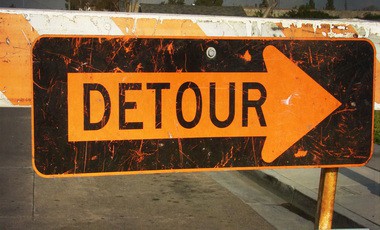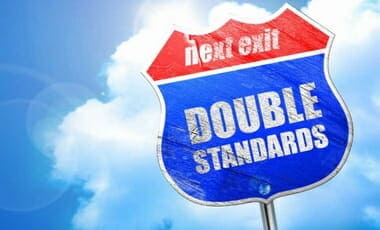Armstrong and Getty react to and read from a few articles making the point that out of almost all nations of comparable size, we are #1 in infrastructure soundness. Here are some of the articles read from (note, stories go in order of: Left Leaning; Libertarian; Conservative)
- No, America’s Infrastructure Is Not ‘Crumbling’ (WASHINGTON POST at FREE MEDIA: reproduced below)
- Our Infrastructure Is Not ‘Crumbling.’ Repeat: Our Infrastructure Is Not ‘Crumbling’ (REASON)
- End of the Runway: Rethinking the Airport Improvement Program and the Federal Role in Airport Funding (HERITAGE FOUNDATION)
One of my beefs, as an example, is this:
A few days after the Chicago City Council approved a $1.3 million legal defense fund to help illegal immigrants facing deportation, officials in Los Angeles unveiled their version with more than seven times the money. It appears to be a growing trend of using public funds to protect those who have violated federal law. The offenders are municipalities that have long offered illegal aliens sanctuary and an array of taxpayer-funded benefits.
[….]
Shortly after the city announced its fund, the Los Angeles County Board of Supervisors offered to kick in another $3 million to provide lawyers for illegal aliens that may face removal under the new administration. The board voted 4-1 in favor of contributing to the L.A. Justice Fund. The supervisor who voted against it, Kathryn Barger, said it’s irresponsible for the board to allocate funding for such a program.
That is a lot of funds that could have been used for city and county infrastructure projects instead of Trump Derangement Syndrome. Why do I say TDS? Because Obama deported more people than Trump… and not a single public money program was spent on legal defense of ILLEGAL aliens.
We already spend almost 500-Billion on infrastructure, and Biden’s “Build Back Better”/Partly The Green New Deal, spends “Only $110 billion of the so-called $1 trillion-plus bipartisan infrastructure package goes toward road, bridges, and other major projects that the American people generally consider ‘infrastructure,’” (BREITBART)…. over ten years.
The WASHINGTON POST story that the ARMSTRONG and GETTY SHOW read from, but it is behind a paywall. So the following is an unlocked version of it.
No, America’s Infrastructure Is Not ‘Crumbling’ (FREE MEDIA)
By Charles Lane,
The United States covers 3.8 million square miles, with 95,471 miles of shoreline and about 12,000 miles of commercially navigable inland waterways; it soars from 282 feet below sea level in Death Valley to 20,310 feet above sea level at Mount Denali.
Knitting this vast and varied territory together are 2.7 million miles of paved roads, more than 500 commercial airports, more than 615,000 bridges, approximately 140,000 miles of freight railroad and more than 300 ports on the coasts, Great Lakes and inland waterways.
Miraculous as these engineering marvels are, it would be even more amazing if some U.S. infrastructure — e.g., the Boston-to-Washington passenger rail corridor, the up to 10 million homes that still get their water through lead pipes, or Texas’s electrical grid — did not need expensive modernization or replacement.
Yet the task before us is not to rescue a neglected, “crumbling” system, as President Biden put it while announcing his $2 trillion American Jobs Plan — in rare agreement with his predecessor, Donald Trump, who pitched his own infrastructure bill (without success) by talking about tiles falling from the ceiling inside New York City’s tunnels.
The real challenge is to take what is by any reasonable measure the best, or nearly the best, infrastructure in the world, and to sustain improvements that have already been occurring in recent years.
Biden warned that U.S. infrastructure is “ranked 13th in the world,” as if it were shameful to outscore about 90 percent of the 141 economies analyzed in 2019 by the World Economic Forum.
In fact, 13th place represents an upward shift of about 10 spots since the 2011-2012 WEF survey — and still underrates the United States.
Of the 12 economies the WEF ranked ahead of the United States in 2019, three — Singapore, Hong Kong and the United Arab Emirates — are tiny coastal city-states. It’s patently spurious to compare their infrastructure challenges with those of the United States.
Among the 10 geographically largest countries, including Canada, Australia, China and Russia, the United States places first, based on WEF criteria. The United States is also top among the 10 most populous countries.
Relative to other wealthy countries, the United States does still trail the Netherlands, Switzerland, Japan, Korea, Spain, Germany, France, Austria and the United Kingdom. However, it’s more realistic to treat the six continental European countries in this group as a unit, since goods and people move through them freely, via the borderless Schengen area. (The European Union members partly share infrastructure costs.) Coupled with deletion of the aforementioned micro-states, this adjustment puts the United States in the top five.
WEF ratings rest largely on a subjective survey in which business executives rate their countries’ roads, ports, and air and rail services on a scale of 1 to 7. This tilts against the United States because the rail-quality question does not distinguish between passenger (poor in the United States but excellent in Europe) and freight (a U.S. strength).
The American Society of Civil Engineers, a pro-construction lobby, issues quadrennial, and unflattering, “report cards” on U.S. infrastructure, frequently cited in support of the “crumbling” talking point. The ASCE’s 2021 report card gave the United States a C-.
But that was the best grade in 20 years. “Five category grades — aviation, drinking water, energy, inland waterways, and ports — went up, while just one category — bridges — went down,” relative to ASCE’s 2017 report card, the organization acknowledged.
That lone downgrade (from C+ to C) occurred despite a decline in the share of highway bridges the U.S. government rates as “poor,” to just 7.5 percent, concentrated in lightly traveled rural areas. The ASCE complained, nevertheless, that “the rate of improvements has slowed,” while a small percentage of the nation’s bridges slipped from “good” to “fair.” (Both “good” and “fair” denote safe, usable structures.)
Talk about accentuating the negative! The impartial Congressional Research Service saw the cup half full in a May 2020 report, noting that “the number and share of bridges in poor condition have dropped significantly over the past 20 years,” and that “a relatively modest increase in spending” between now and 2040 could solve the problem.
As for interstate highways, a 2019 study by economists from the University of Pennsylvania and Brown University confirmed that “over the past generation, the condition of the interstate highway network improved consistently,” according to government data, even as “its extent increased modestly, and traffic about doubled.”
Obviously, all such assessments incorporate subjective judgments and debatable definitions. The big picture, though, is that the gigantic U.S. infrastructure is fundamentally sound — impressively, but not surprisingly, given that governments at all levels spent $370.5 billion on it in 2018, up from $284 billion in 2008, according to official data. Recent projects include the $8 billion modernization of New York’s LaGuardia Airport, a $4.4 billion bridge connecting Detroit and Windsor, Ontario, and a more than $2.4 billion overhaul of Central Florida’s I-4 highway.
To repeat: There’s no reason for complacency about U.S. infrastructure. Yet alarmist generalizations don’t help us identify the most pressing needs with the greatest potential economic benefits. They might pave the way to wasted resources and public disenchantment.
ARMSTRONG and GETTY SHOW read from the following article as well “Highways and Bridges Are Not Crumbling (REASON)“
One of the great myths of American politics, no matter who is president and no matter who runs Congress, is that our infrastructure is “crumbling.” Former President Barack Obama repeatedly warned us about our “crumbling infrastructure.” President Donald Trump now tells us that our infrastructure is “crumbling.” The next president is going to hatch a giant plan to fix our crumbling infrastructure as well, because most voters want to believe infrastructure is crumbling.
The infrastructure is not crumbling. Ask someone about infrastructure and his thoughts will probably wander to the worst pothole-infested road he traverses rather than the hundreds of roads he drives on that are perfectly safe and smooth. That’s human nature.
So “crumbling infrastructure” peddlers play on this concern by habitually agonizing over things like the impending outbreak of tragic bridge collapses that will kill thousands. They bring up tragedies like the 2007 disaster with the Interstate 35 bridge over the Mississippi River in downtown Minneapolis even though, according to federal investigators, the collapse was due to a design flaw rather than decaying infrastructure. Many outlets and politicians simply ignore the inconvenient fact that the rare fatality involving infrastructure typically has nothing to do with “crumbling” and everything to do with natural elements or human error.
In reality, the number of structurally deficient bridges, never high to begin with, has been dropping over the past 30 years despite all the hand-wringing. The overall number has fallen from over 22 percent in 1992 to under 10 percent in 2016. According to a Reuters analysis of those bridges, only 4 percent of those that carry significant traffic need repairs. Of the nation’s 1,200 busiest bridges, the number of those structurally deficient falls to under 2 percent—or fewer than 20 bridges in the entire country. And none of those bridges need repair to save them from collapse.
That has never stopped politicians from fearmongering, however. “Our roads and bridges are falling apart; our airports are in Third World condition,” Trump claimed during his 2016 campaign. Yet as the Heritage Foundation’s Michael Sargent points out, the percentage of airport runways deemed as poor has fallen from 4 percent in 2004 to 2 percent in 2016. And for the past 30 years, the number of “acceptable” or above roads has remained relatively consistent at approximately 85 percent.
Perhaps because they’re constantly being told that America’s roads are on the verge of disintegrating into dust, some voters aren’t aware that federal, state and local governments spent $416 billion on transportation and water infrastructure in 2014—around the same 2.4 percent of gross domestic product they’ve been spending for decades. About $165 billion of that $416 billion, incidentally, was spent on highways. (This doesn’t count the bipartisan Fixing America’s Surface Transportation Act of 2015, which added another $305 billion over five years.)………..
And this is an interesting article:
A recent report from the RAND Corporation looks at America’s infrastructure and concludes that “not everything is broken.” In face, what is broken, more than the infrastructure itself, is “our approach to funding and financing public works.” This is largely because governments by-pass market signals and rely on “often complicated and multilayered governance arrangements and competing public goals and preferences” to make decisions about where to spend money.
For example, the report shows that government spending on infrastructure as a percentage of gross domestic product declined from a peak of 3 percent of GDP in 1960 to about 2.5 percent in 1980, and has hovered between 2.5 and 2.7 percent since then. But governments also made a clear trade-off in infrastructure spending: spending on roads declined from 1.6 percent of GPD in 1960 to around 1 percent in and since 1980, while government spending on mass transit grew from 0.1 percent in 1970 to 0.4 percent in and since 1980.
This would be fine if spending on mass transit had been as productive as spending on highways had been. But it wasn’t. Until the 2008 financial crisis, per capita driving continued to grow despite the lack of much capital spending on new roads, while per capita transit ridership was stagnant or declining. The report doesn’t have data after 2014, when per capita driving began to increase again while transit ridership began to collapse.

